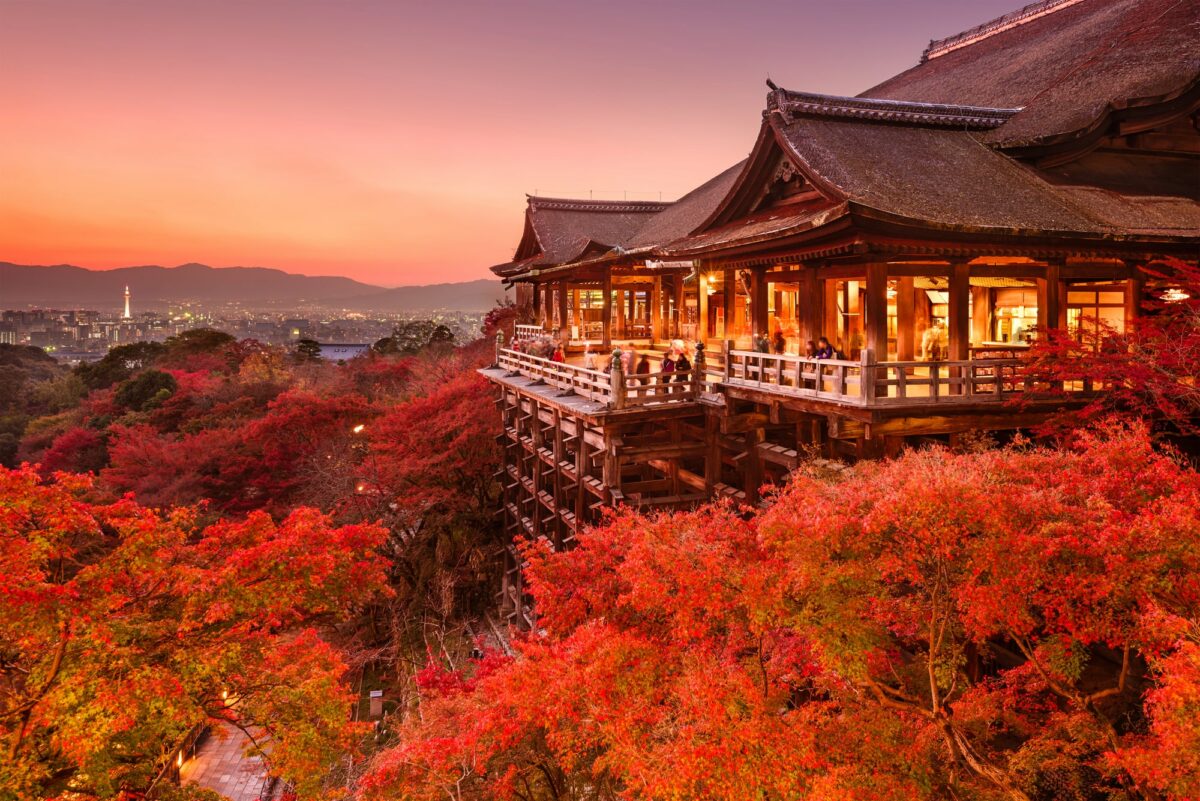
If you only have 2 days in Kyoto, Japan, go see these 7 temples and shrines.
Some links on this page are affiliate links. We may earn a commission if you make a purchase, at no additional cost to you.
Read on for their history, meaning, access, and temple and shrine etiquette.
Kyoto, the ancient capital of Japan, is known for its long history, rich culture and deep roots in religion and spirituality. It’s no wonder that of the thousands of Shinto shrines and Buddhist temples in Kyoto, a good portion are famous tourist attractions and UNESCO World Heritage Sites.
Not only are these shrines and temples architecturally gorgeous and picturesque, but their significance in history, religion, and in the hearts of the Japanese people cannot be overlooked. Before visiting, be sure to brush up on your etiquette with this comprehensive guide!
If you’d like a customized tour of Kyoto, we recommend GoWithGuide and their 100% customizable private tours. Their guides will work with you via email before you arrive to tailor a tour just for you.
7 Must-See Temples and Shrines When Visiting Kyoto
To truly understand these sacred sites, we’ll briefly delve into their history, meaning, and significance to the Japanese people. We also provide tips on how to visit them respectfully.
1. Kinkaku-ji (Golden Pavilion)
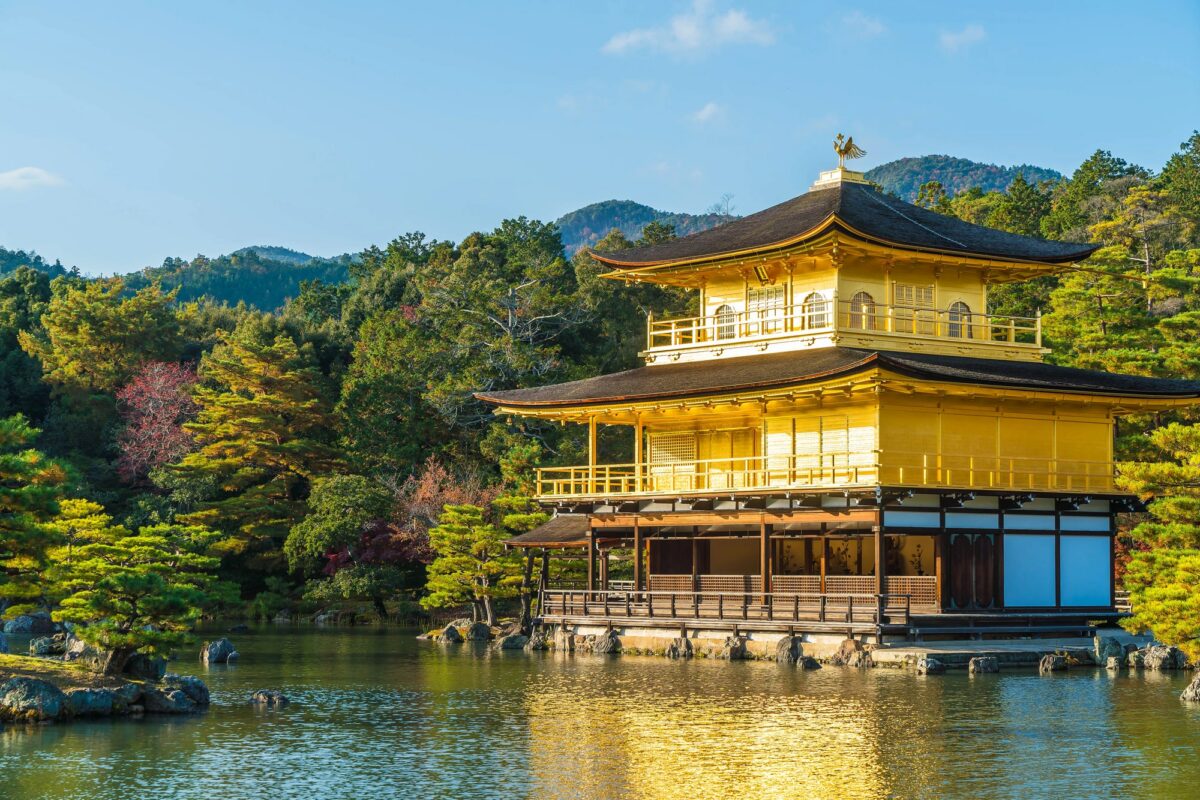
One of Kyoto’s oldest and most iconic landmarks, Kinkaku-ji literally means “Golden Pavilion.” Its real name is actually “Hokuzan Rokuon-ji”—quite a mouthful, which is why it is now affectionately referred to as Kinkaku-ji.
History:
Originally a Zen Buddhist temple built in 1397 by the shogun Ashikaga Yoshimitsu as his retirement villa, Kinkaku-ji became a temple after the shogun’s death as per his will.
The top two floors of the pavilion are covered in gold leaf, giving it its trademark golden glow, which reflects in the pond below.
Significance:
Though it is now flooded with tourists as a picture-hotspot, Kinkaku-ji actually represents the impermanence of life. Despite being burned down multiple times, most recently in 1950, the temple has been rebuilt and remains a symbol of resilience and beauty in Japanese culture.
Etiquette Tips:
While visiting, be respectful by speaking quietly and refraining from touching the temple’s structures. Photography is allowed, but always be mindful of others who are there for spiritual reasons.
2. Fushimi Inari Taisha
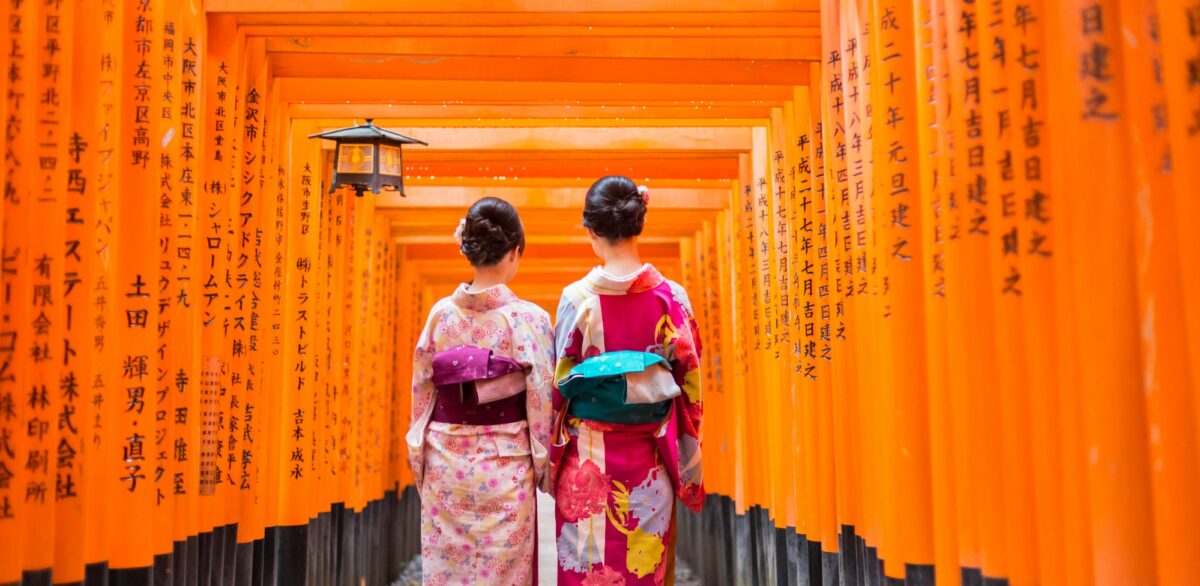
This Shinto shrine is probably what you envision when you hear “Kyoto.” With thousands of scarlet torii gates lining the path up Mount Inari, this picturesque spot is crowded year-round, from dawn to dusk.
It takes about 2 hours to climb from the foot of the shrine to the top of the mountain, and the further up you go, the less crowded it gets. At one point, the torii gate-lined path splits left and right, so you can take a different way down than you climbed. My favorite time to go is in the early morning, with the soft rays of sun filtering through the trees and dancing patterns on the torii gates.
History:
Founded in 711 AD, Fushimi Inari Taisha is one of Japan’s most important Shinto shrines, dedicated to Inari, the fox god of harvest, prosperity, safety, and business. While there are numerous shrines of the fox god all over Japan, some even with the same pattern of repeating torii gates, Fushimi Inari is considered the “head” of all the smaller Inari shrines, where the god resides.
Significance:
For centuries, Fushimi Inari has been a place where people come to pray for prosperity and success. The shrine is deeply rooted in agricultural traditions, and Inari is seen as a protector of harvest, merchants, and tradesmen.
Etiquette Tips:
When walking through the torii gates, it’s customary to stay to the left or right to allow space for the gods who are said to walk through the center. Be respectful, and avoid loud conversations as you explore the trails.
3. Kiyomizu-dera
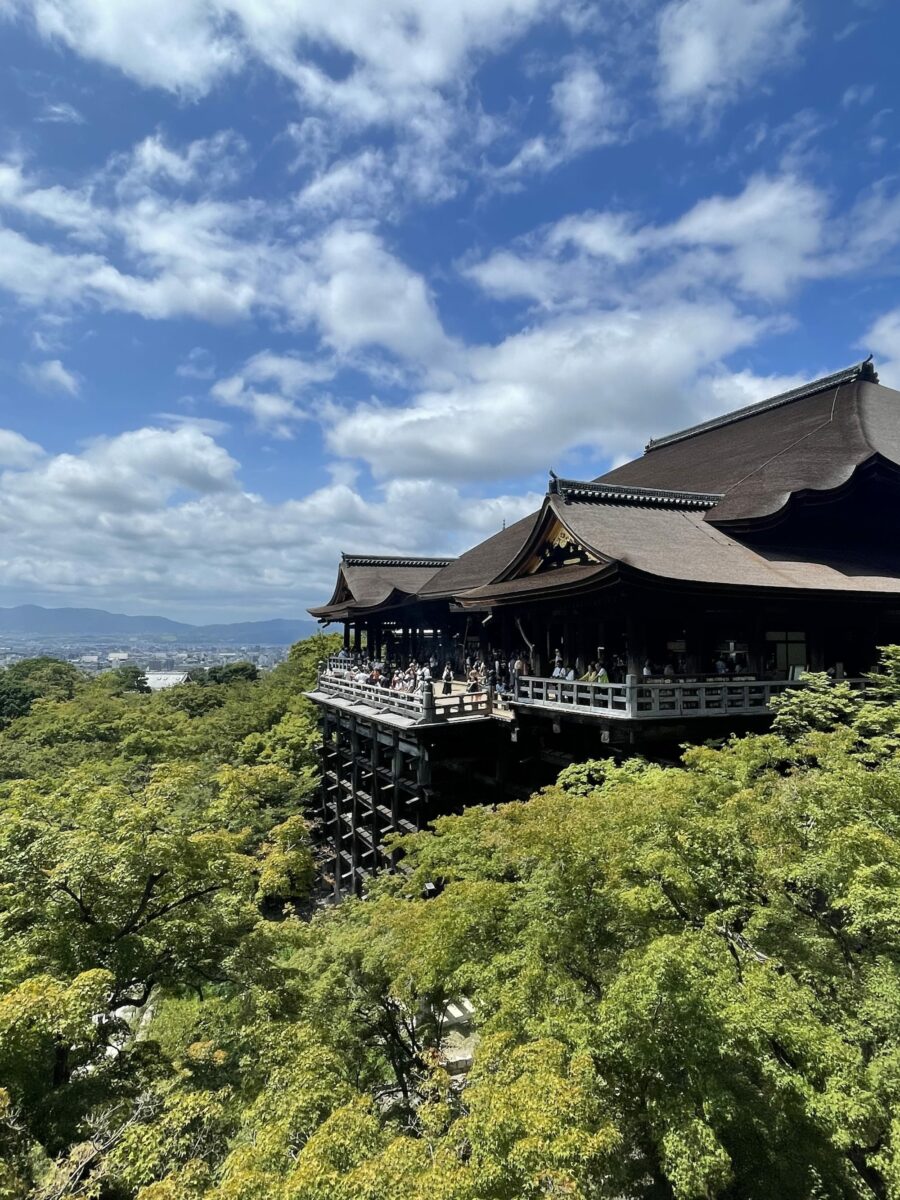
There is probably not a single person in Japan who doesn’t know of Kiyomizu Temple. Kyoto is a popular school trip destination for schools all over Japan, most people have visited at least once—and it’s absolutely a must-visit destination if you are in Kyoto.
Besides the panoramic view of Kyoto from the top, and the stunning architecture in the temple, there’s also a ton of shops and food stalls lining the hilly path up to the temple itself—and a waterfall that grants your wishes!
History:
Founded in 778 AD, Kiyomizu-dera is one of Kyoto’s oldest and most important temples—if not THE most famous. Perched on the hillside of Mount Otowa, it offers a stunning overlook of Kyoto.
The temple’s wooden stage, supported by pillars without the use of nails, is one of its architectural marvels and a hallmark of Japanese craftsmanship.
Significance:
Kiyomizu-dera is dedicated to Kannon, the goddess of mercy. The temple has long been a place where people come to seek guidance, blessings, and the fulfillment of wishes. The deity here is also known for “en-musubi,” meaning connection or matchmaking. In this case, it doesn’t just mean love and marriage—you can gain connections in the form of good luck, friendships, or love.
Must-Visit Alert! Magic Waterfall
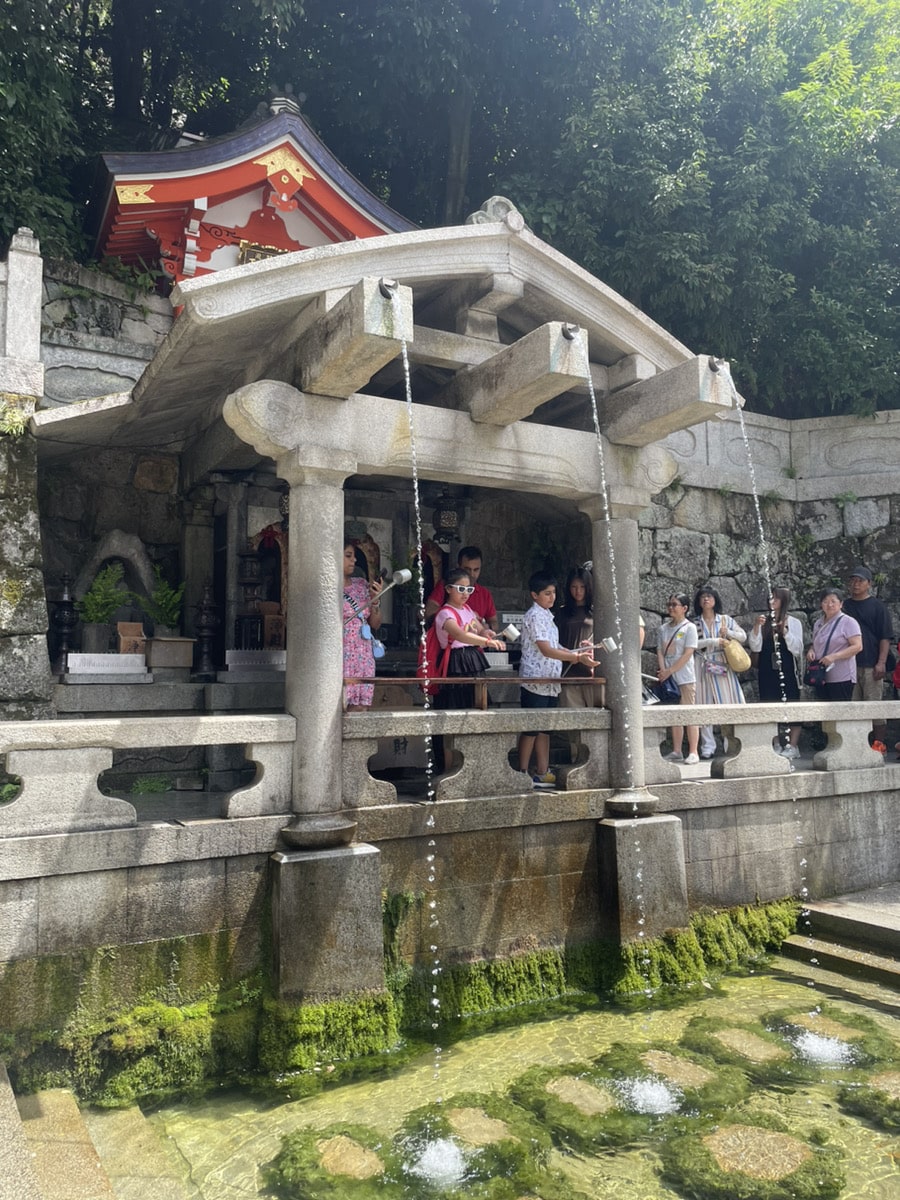
Once you get down from the temple, be sure to stop by the power spot—a waterfall which grants wishes. Called the “Otowa-no-taki”, this waterfall is divided into three spouts of drinkable water. Drinking from the first grants you success in learning and work, the second in love and relationships, and the third in better health and a long life.
You’re not supposed to drink from all three—you can choose one spout and collect some water with the scoops provided. It is free to participate, but expect to line up. It is also considered bad form to fill up your water bottle or take extra long at the spouts.
Etiquette Tips:
Visitors should purify their hands at the entrance before proceeding to the main hall. When making offerings or prayers, approach the altar respectfully, bow slightly, and clap your hands before praying.
4. Ginkaku-ji (Silver Pavilion)
The counter part to the Golden Pavilion isn’t actually silver—but it can be considered to be a truer representation of Kyoto and Japanese culture in many ways.
History:
Built in 1482 by shogun Ashikaga Yoshimasa, Ginkaku-ji was intended to be a counterpart to the Golden Pavilion (Kinkaku-ji). Although never covered in silver as planned, the temple has become a symbol of refined, understated beauty and is known for its exquisite sand garden and moss-covered grounds.
Significance:
Ginkaku-ji gives life to the aesthetic of wabi-sabi, a Japanese concept that finds beauty in imperfection, transience, and modesty. The temple’s plain appearance contrasts with the opulence of Kinkaku-ji, reflecting a core Japanese value of humbleness and simplicity.
Etiquette Tips:
As with other temples, maintain a quiet and respectful demeanor. Take time to appreciate the garden’s subtle beauty and avoid rushing through the grounds. Photography is allowed, but be mindful of those who are there to reflect or meditate.
5. Yasui Konpira Gu Shrine
This shrine is not famous with overseas tourists, nor is it a World Heritage site like some of the others mentioned on the list, but I personally find it very interesting.
While some other temples and shrines enable prayers for good luck, safety, marriage, or business prosperity, the god of Yasui Kinpira-gu receives and grants prayers for “en-kiri,” or breaking of connections. Think breakups, ending friendships, or disowning a family member.
In a positive light, the god can “sever” your connection with disease or misfortune and then “forge” a new positive connection with prosperity and good health. Check out the enkiri/enmusubi stone!
History:
Built around the 7th century, this shrine has gone through name changes and destruction, taking on its current name in the Meiji era. Its full history can be found on the website.
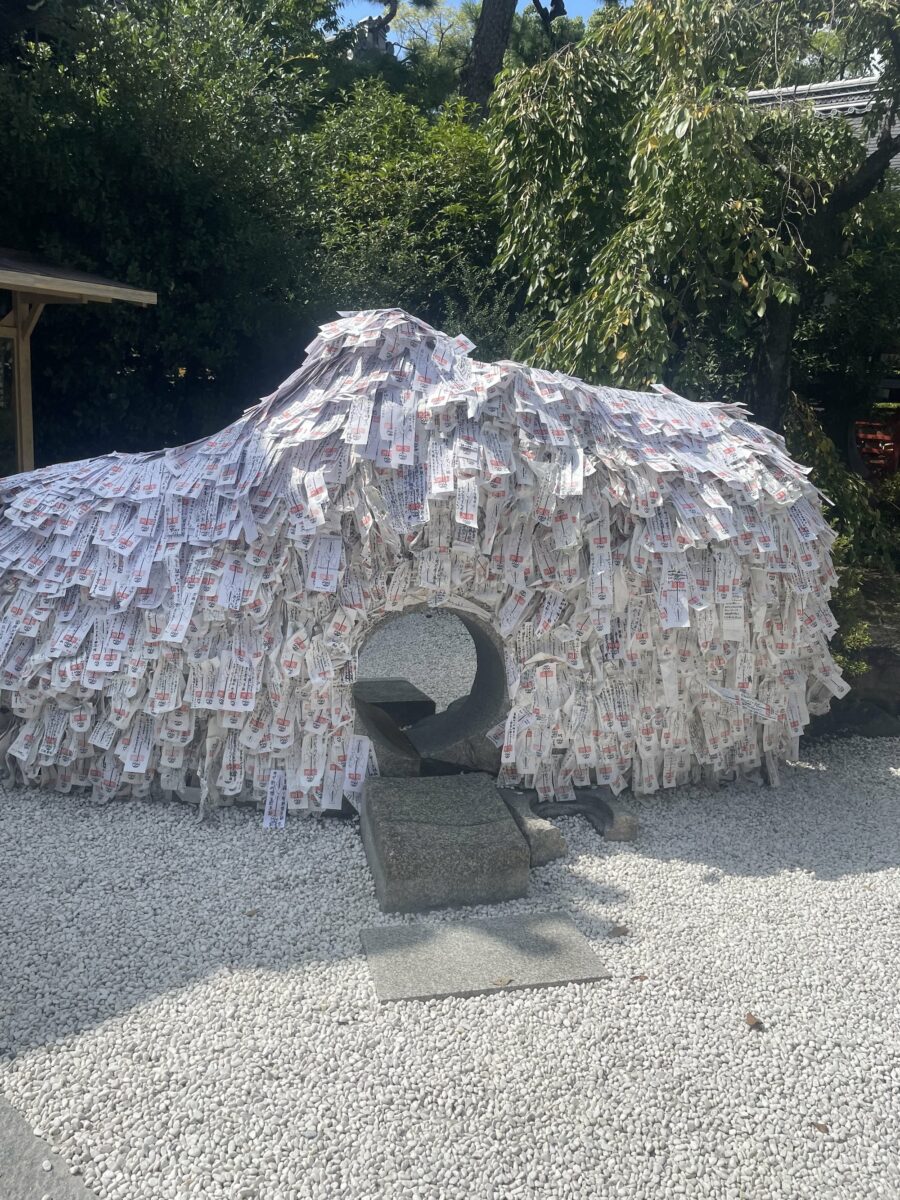
How to Pray Here:
After you’ve cleansed your hands and prayed at the main shrine, head over to the stone in the middle of the grounds with a hole in the middle. Nearby, there’s a table with papers and pens. You can pay 100 yen for a piece of paper to write what you want to sever a connection with.
Once finished, you’ll hold your wish and crawl on your knees through the hole while thinking of what you want to end a connection with. On the other side, you’ll crawl back through while thinking of a new connection you want, and glue your wish to the top of the rock when you’re finished.
6. Yasaka Shrine
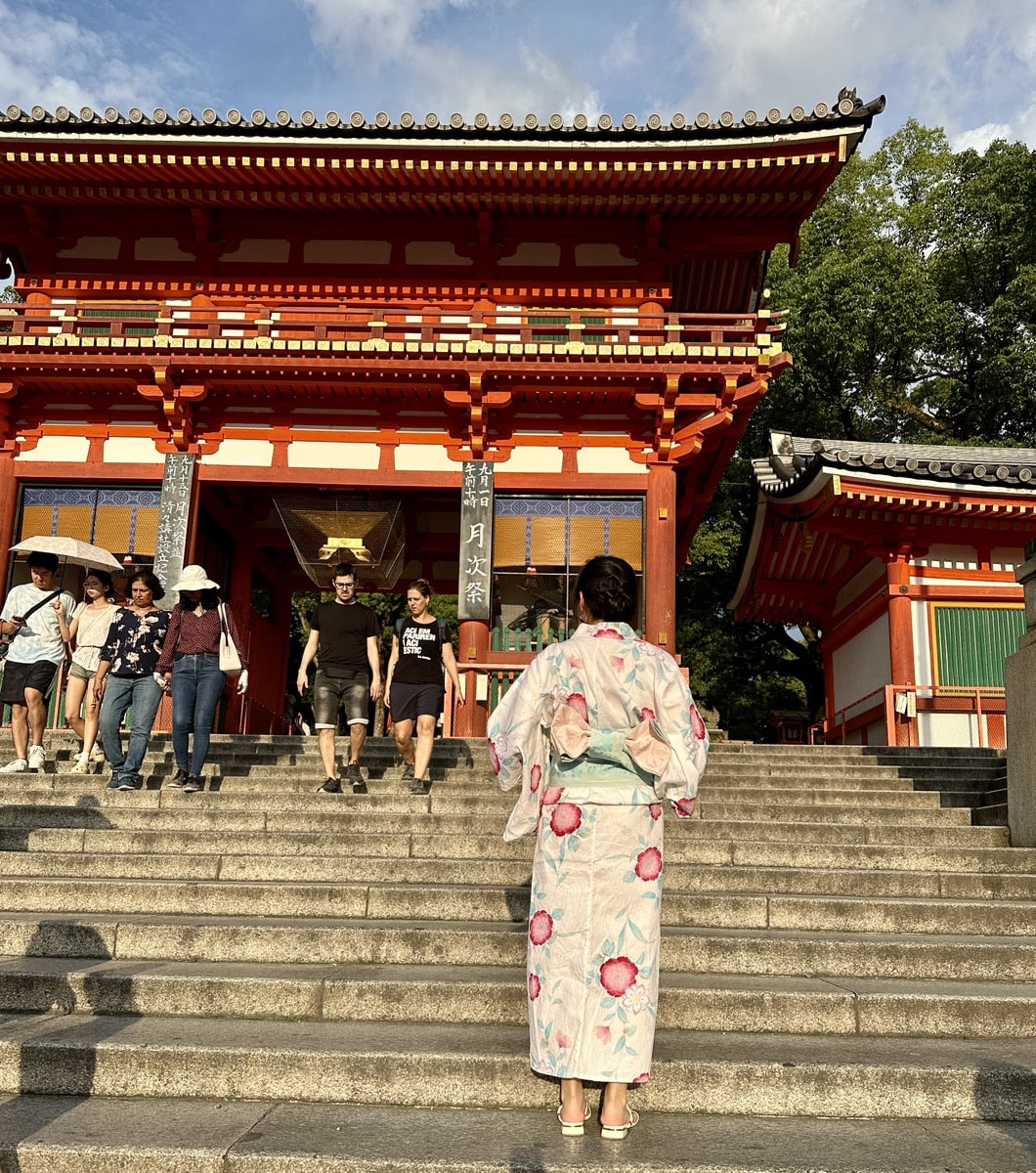
Located in the center of the Gion district or downtown Kyoto, you can’t miss the red and gold gates of Yasaka Shrine. Every July, one of Japan’s largest and most famous festivals, “Gion Matsuri,” is hosted here.
History:
Yasaka Shrine, also known as Gion Shrine, is one of Kyoto’s most prominent Shinto shrines. Founded around 656 AD, it is dedicated to the god of storms and seas, Susanoo-no-Mikoto. Locals pray for good fortune, success in love, and business prosperity here.
Significance:
Yasaka Shrine has long been a protector of Kyoto, especially during times of plague or natural disaster. It stands as a guardian of health, prosperity, and happiness for the people. The Gion Matsuri, which originated as a ritual to ward off epidemics, is held annually and continues to be a major cultural and religious event in Japan.
7. Ryoanji
History:
Established in 1450, Ryoanji is known for its famous rock garden, a masterpiece of minimalist Japanese landscape design. The garden, composed of fifteen rocks set in white gravel, is a place for meditation and contemplation.
Significance:
Before “Zen” made waves overseas, it was a principal of Buddhism; Ryoan-ji’s garden is a perfect visual representation of the profound expressions of this philosophy.
It encourages viewers to embrace simplicity and find meaning in what is not immediately apparent. The arrangement of the rocks is said to inspire mindfulness, with interpretations of the garden left up to each viewer.
Etiquette Tips:
Silence is key when visiting Ryoan-ji. The rock garden is a place for deep contemplation, so avoid speaking loudly or using your phone. It is important to sit quietly and reflect on the space without disrupting the meditative atmosphere.
Also, in Kyoto:
Conclusion
Visiting Kyoto’s shrines and temples is a journey through time and a pilgrimage of the soul, where one can experience the serene beauty of Japan’s spiritual heart.
These sacred shrines and temples, each with its unique history and significance, offer more than just breathtaking architecture and scenic beauty. They are living symbols of Japan’s deep connection to nature, tradition, and the divine.
Whether you seek inner peace, a quiet place for reflection, or simply a good Instagram photo, Kyoto’s shrines and temples provide it all. It’s a great chance to step away from the fast pace of modern life and immerse yourself in centuries-old traditions that still resonate with the Japanese people today.

Leave a Reply